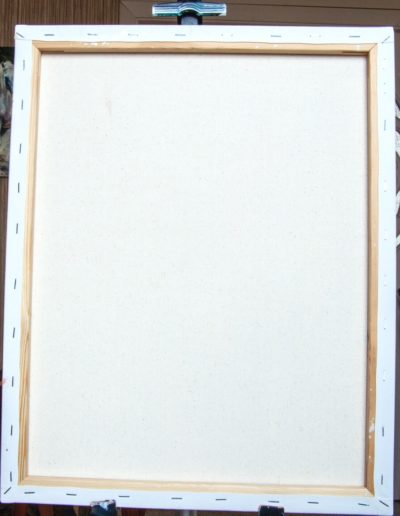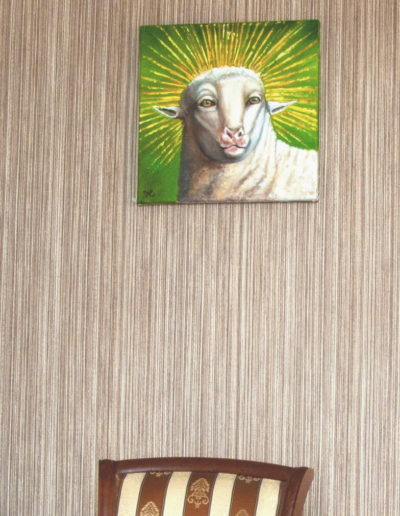Lamb of God
Lamb of God — oil painting painted in the style of the old Italian masters of the Renaissance. The image was painted by the artist very carefully and in detail, which is characteristic of the art of that era. This image in the original picture symbolizes Jesus for us and it is very close to the artist, as a set of his own experiences. Lamb of God was created based on the greatest masterpiece of European art — the Ghent Altarpiece by the Van Eyck brothers. The mystery of the Apocalypse appears in it as the Passover message about the Lamb, slain, but alive. The paradise vegetation of the garden crowned with the towers of New Jerusalem, the dazzling splendor of colors, the jubilant hosts of angels and saints are akin to the solemn tranquility of early Christian art … These stories are dedicated to the beautiful images of the altar of St. lambs. One is the lamb mentioned in the Revelation of John the Theologian. The other is the Lamb of God from the Ghent altar of the van Eyck brothers. The theme of the two lambs brings us back to the question of religion and art, or, to be more precise, about the word and the image, the Divine Word and the image that is created by the creative genius of man. This is the problem of the sacred — and that which is born as a human response to the revelation of the Divine in earthly reality, the theme of heaven and earth. Handmade oil painting.
See other paintings by Evgenia Zragevskaya here: Forest Lake
Two lambs interpenetrate each other. The closer to the ground, the closer to the sky. This paradox is hidden in the symbolic structures of John the Evangelist, and in the mystery of Flemish art, which is deeply rooted in the Flemish land and therefore reaches the sky …
By itself, the expression «Lamb of God», as a rule, causes confusion, becomes a stumbling block. Those who live in big cities, in the world of digital technologies, market relations are cut off from the simple reality that the lamb symbolizes. Seeing live lambs in a village does not mean seeing what John the Theologian is talking about. Animal husbandry, the production of lamb, the affection of a truly meek and innocent creature in itself does not bring us closer to what the Scripture says, to what the lamb expresses in the sacred world. However, it should be recognized that there is nothing further from our civilization than concepts such as sacrifice and sacred. This problem, for example, is posed by Nietzsche: in our everyday consciousness, the conversation about the victim, as a rule, turns into an apology for suffering and resentment. And nothing more.
In the context of a conversation about religion and painting, I would also like to touch upon the issue of space. We used to call space that which can be measured in steps, within which we can move. Art reminds us of the existence of other spaces. Music, painting, poetry have their own space.
It is curious that the term «interval» itself, used in solfeggio lessons, contains the idea of space, that is, distance, distance, while the distance that is not measured in meters. The word «tone» is one root with «tone» and means internal tension, the tension of the string. Thus, art encourages us to go beyond the usual and everyday understanding of space.








